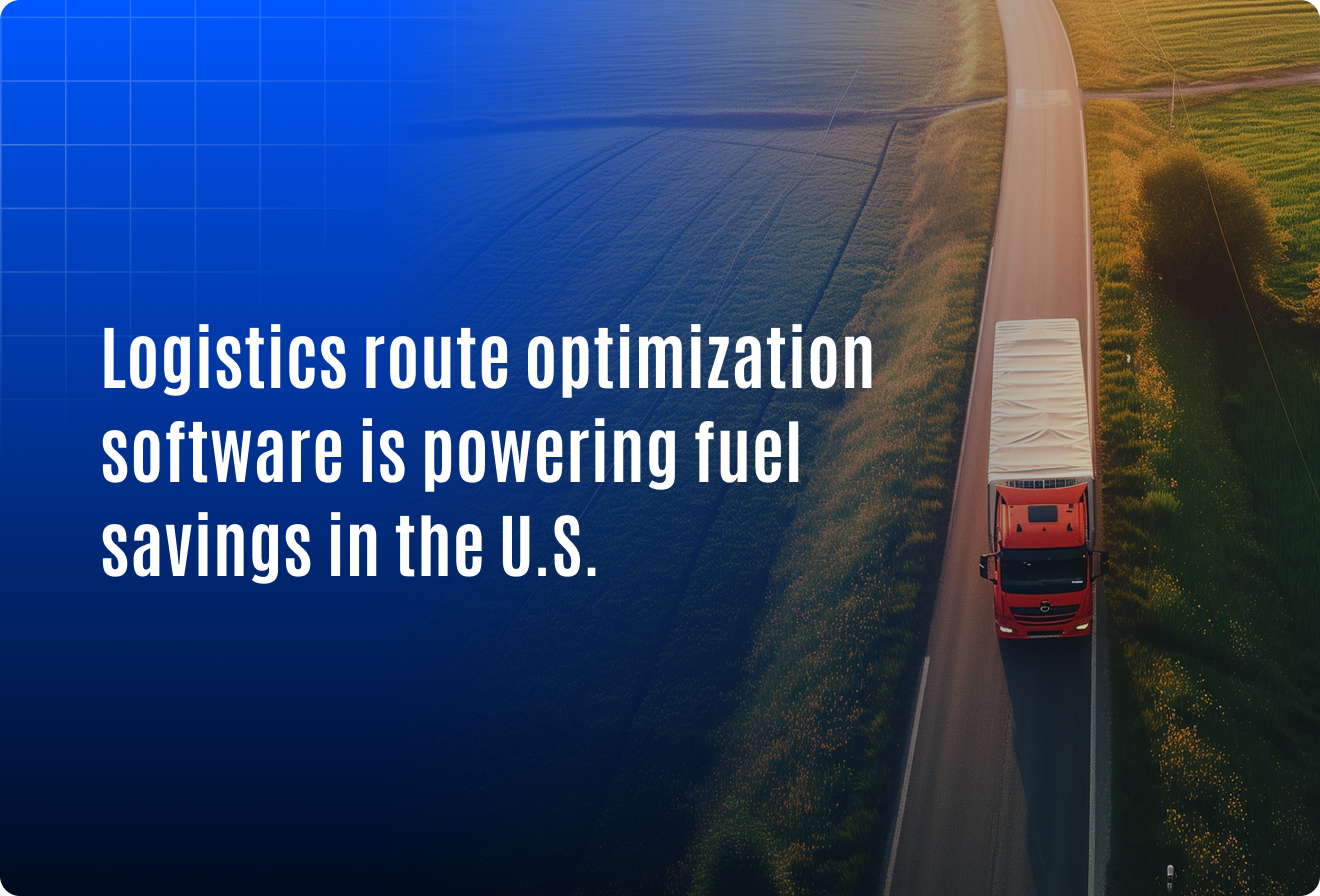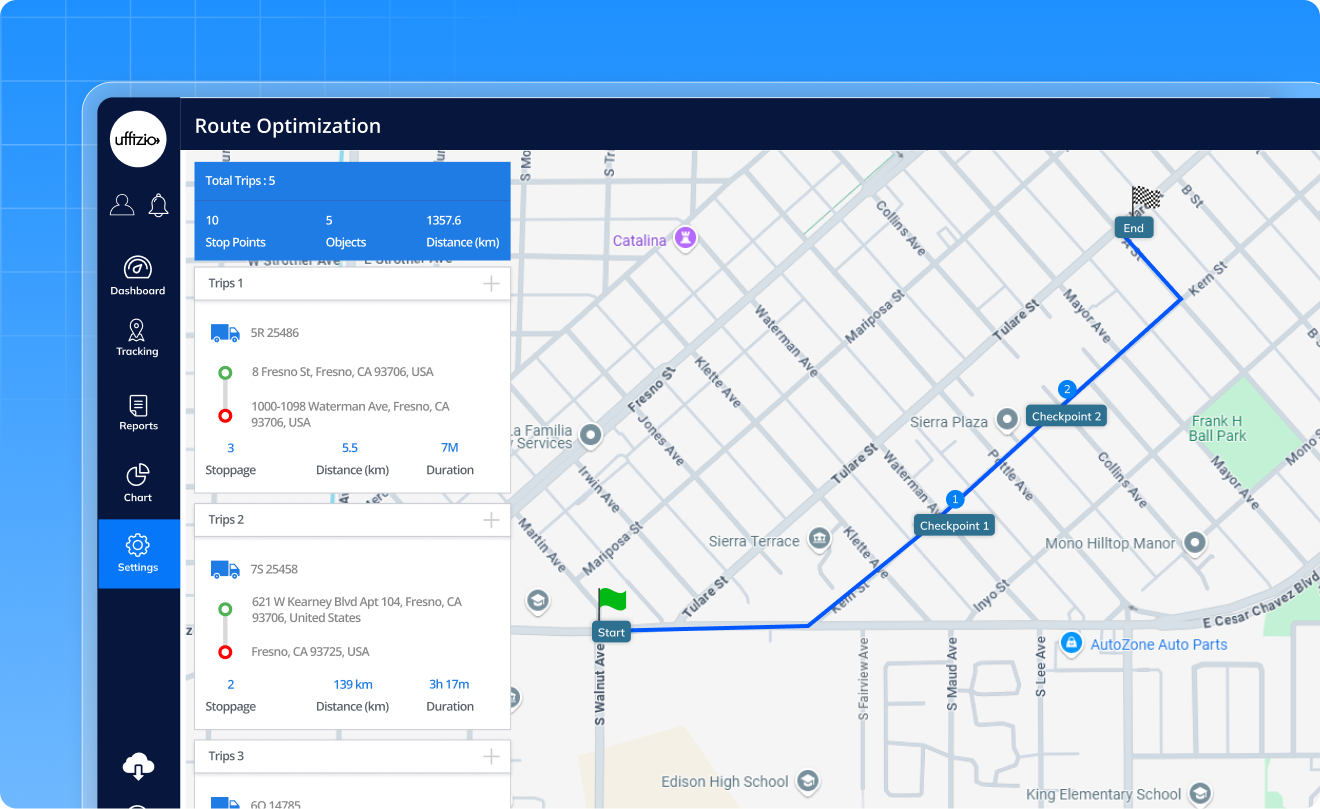How logistics route optimization software is driving down fuel costs for U.S fleets

Fuel expenses continue to be one of the largest operational costs for fleet businesses in the United States. According to the American Transportation Research Institute, fuel accounts for over 25 percent of a fleet’s total operating costs, with national average diesel prices hovering above 4$ per gallon in many states. Even minor inefficiencies in routing can lead to substantial monthly losses. Fleet operators are now turning to logistics route optimization software to gain better control over their expenses. The software uses real-time data and intelligent algorithms to plan efficient routes, avoid traffic congestion, and reduce unnecessary idling. As a result, fleets can lower fuel consumption, improve delivery timelines, and strengthen profit margins in a highly competitive logistics environment.
How logistics route optimization software works
Logistics route optimization software works by automatically assigning jobs to vehicles based on their location, availability, and capacity. The system uses real-time data to suggest the shortest and fastest routes while keeping delivery time windows in mind. Here’s how it supports U.S. logistics fleets in day-to-day operations:

- Job-to-vehicle easy allocation
The software selects the most appropriate vehicle for each task using parameters like current location, load capacity, and job priority. This ensures better vehicle utilization and reduces dispatch delays. - Real-time route calculation
Routes are generated dynamically using live traffic updates, distance, and road conditions. This allows fleets to avoid congestion hotspots and reduce unnecessary idling, helping cut fuel usage significantly. - Visual trip planning dashboard
Managers can view all active and scheduled trips on a single screen. They can modify assignments, reassign jobs, or adjust timelines with just a few clicks—ideal for high-volume logistics operations. - Delivery time window management
The system factors in the promised delivery time slots and adjusts routing accordingly. This helps fleets maintain punctuality and customer satisfaction without overdriving or rushing, which would otherwise waste fuel. - Live vehicle tracking with route compliance
Each vehicle’s path is monitored in real time. Alerts are triggered when vehicles deviate from assigned routes, helping ensure compliance and avoiding fuel-wasting detours. - Integrated geofencing for stop-level control
Geofences are created around delivery or loading zones to monitor arrivals, departures, and delays. This supports accurate ETA tracking and prevents unauthorized stops that often lead to fuel misuse.
Key benefits of using logistics route optimization software
By adopting logistics route optimization software, U.S. fleet operators can gain significant operational and financial advantages. Here’s what makes it valuable:

- Lower fuel costs across routes
Optimized routing means fewer detours, less idle time, and reduced total mileage per trip. For fleets operating in states with high fuel prices, this leads to immediate and measurable cost savings. - Better delivery accuracy and on-time performance
The software ensures that each route aligns with customer delivery windows. This improves schedule reliability and reduces missed or late deliveries that could damage service credibility. - Improved vehicle utilization
With intelligent job allocation and route planning, more deliveries can be completed using fewer vehicles. This helps in managing high-volume orders without increasing fleet size or fuel usage. - Faster decision-making for dispatch teams
With a centralized dashboard and live trip data, dispatchers can respond quickly to changes. Whether it’s a traffic jam or a last-minute order, they can reroute without delays or manual errors. - Better compliance and accountability
Geofence alerts and live tracking provide clear records of each trip. This supports internal policy enforcement and also helps meet state-specific transportation rules or fuel usage reporting needs. - Reduced carbon footprint
By optimizing fuel use and cutting idle time, fleets contribute to cleaner operations. This is especially important in states promoting green logistics through regulations and incentives.
Conclusion
As fuel prices fluctuate and delivery expectations grow, logistics companies across the United States are under pressure to optimize every mile. Logistics route optimization software offers a direct solution by minimizing fuel waste, improving vehicle efficiency, and enabling better control over daily operations. In California, for example, where traffic congestion and emission regulations are strict, the software helps fleets stay compliant while cutting fuel use. Texas, where fleets often operate over long distances between cities, optimized routing ensures that fuel is used wisely across extended hauls. In states like New Jersey or Illinois, the ability to respond instantly to traffic or delivery changes keeps urban distribution on schedule. No matter the region, route optimization is proving essential for reducing operating costs while keeping logistics fleets agile, compliant, and fuel-efficient.



